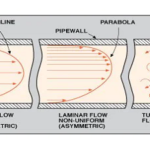Introduction
The standard consistency of a cement paste is defined as that consistency which will permit the Vicat plunger to penetrate to a point 5 to 7mm from the bottom of the Vicat mould. Consistency refers to the relative mobility of a freshly mixed cement paste or mortar or its ability to flow.
Objective(s) of the Experiment
The test is carried out to determine the consistency of cement using Vicat apparatus
Equipments Needed
- Vicat apparatus
- Weighing Balance that measures up to 1000g with accuracy of 1g
- Measuring cylinder of 100ml
- Tray
- Glass Plate
- Gauging Trowel

Procedures
- This test shall be conducted at a temperature 27 + 20C and the relative humidity of laboratory should be 65 + 5%, unless otherwise specified.
- Prepare a paste of 400g of cement with weighed quantity of potable or distilled water (about 25% by weight of cement) to form a paste. Care must be taken that the time of gauging (time taken to attain thoroughly mixed water-cement paste) is neither less than 3minutes nor more than 5minutes and the gauging is completed before any sign of setting occurs. The gauging is counted from the time of adding water to the dry cement until commencing to fill the mould.
- Fill the Vicat mould with this paste resting upon the non-porous glass plate.
- Smoothen the surface of the paste, making it level with the top of the mould.
- Slightly shake the mould to expel the air. In filling the mould operators hands and the blade of the gauging trowel shall only be used.
- Immediately place the whole assembly (with the non-porous plate) under the rod bearing the plunger.
- Lower the plunger gently to touch the surface of the test block and quickly release, allowing it sink into the paste.
- Record the depth of penetration
- Prepare trial pastes with varying percentages of water and test as described in the steps above until the plunger is 5mm to 7mm from the bottom of the Vicat mould.
Result and Calculation
Determine the amount of water A (in percentage) required to prepare a cement paste of standard consistency and express it to the first place of decimals.

Where:
A = Amount of Water Needed for Standard Consistency (in percentage)
W= Weight of Water Added
C = Weight of Cement Used
Discussion and Conclusion
Consistency refers to the relative mobility of a freshly mixed cement paste or mortar or its ability to flow. The consistency of cement provides information which is useful in many other civil engineering practicals; for example, Soundness Test of Cement. Generally, the normal consistency for Ordinary Portland Cement ranges from 26 to 33%.
Note that all the experiment should be performed away from vibrations and other disturbances.
References
- IS:4031(Part 4):1988-Methods of physical tests for hydraulic cement (Determination of consistency of standard cement paste).
- CivilBlog.org (2013). ‘Determination of consistency of standard cement paste’.






